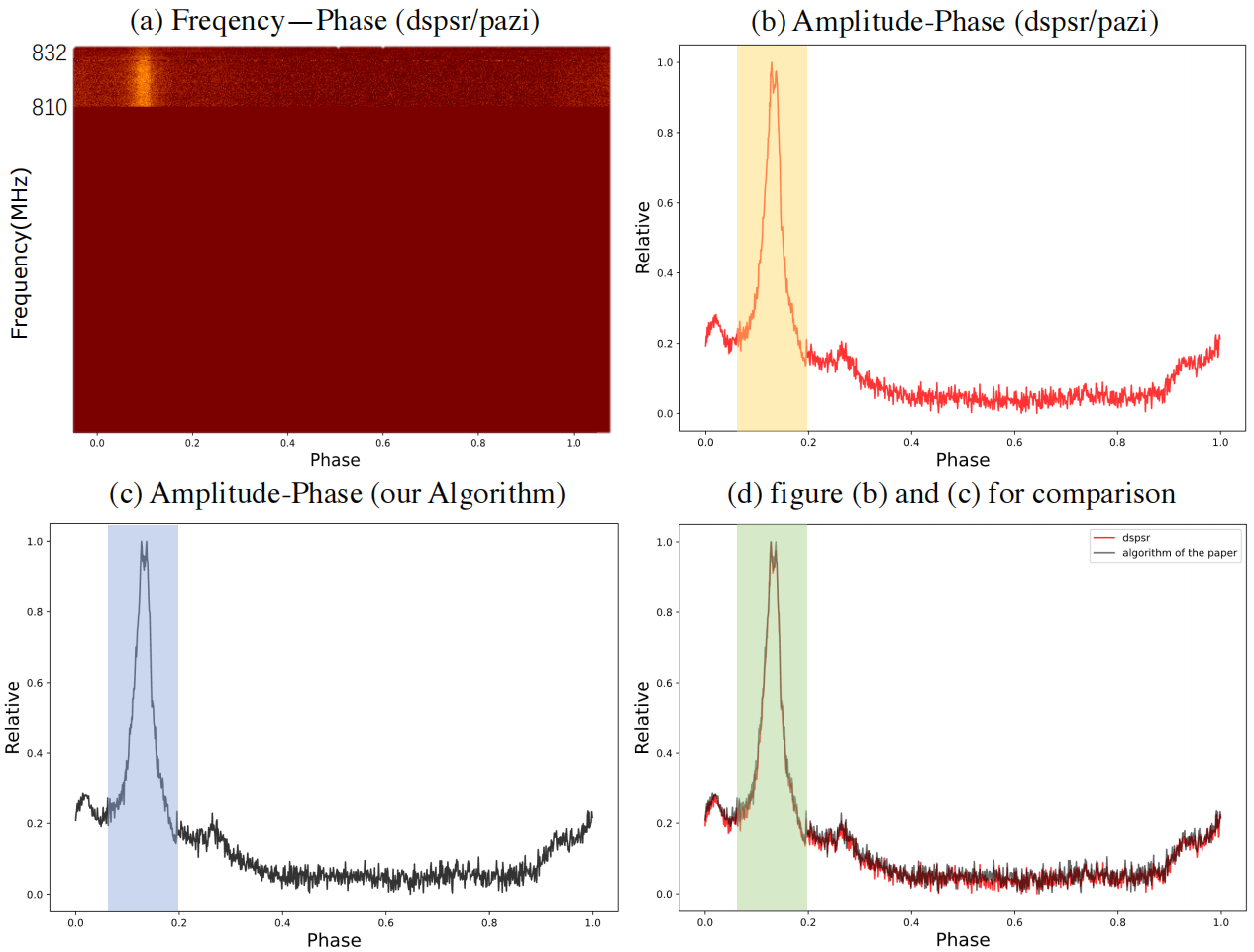Recently, senior engineer ZHANG Hailong, PhD student ZHANG Yazhou at the Xinjiang Astronomical Observatory, Chinese Academy of Sciences and their collaborators have developed a coherent dedispersion algorithm for pulsar baseband data.
There are two main types of dispersion techniques used in pulsar data processing: incoherent dedispersion and coherent dedispersion. Incoherent dispersion has a disadvantage that it cannot completely eliminate the dispersion effect. For pulsar-timing observation with high precision, the data should be processed by the coherent dedispersion techniques to meet the accuracy requirements.
The researchers tested the algorithm using the baseband data of J0437-4715 which recorded by the CASPSR and Medusa backends of the Parkes 64-meter radio telescope, and they obtained the pulse profile and phase information that matched with the processing results of the dspsr/psrchive ( Figure.1).
The related results were published in Research in Astronomy and Astrophysics.
“Theoretically, The algorithm can eliminate the dispersion effect and can be applied to ultra-wideband pulsar high-precision timing process ” said Dr. ZHANG Hailong.

Figure.1 Comparison of the algorithm in this research with dspsr/psrchive processing results
Contact: ZHANG Hailong
Xinjiang Astronomical Observatory, Chinese Academy of Sciences
Email: zhanghailong@xao.ac.cn
Article link: https://iopscience.iop.org/article/10.1088/1674-4527/aca8ee